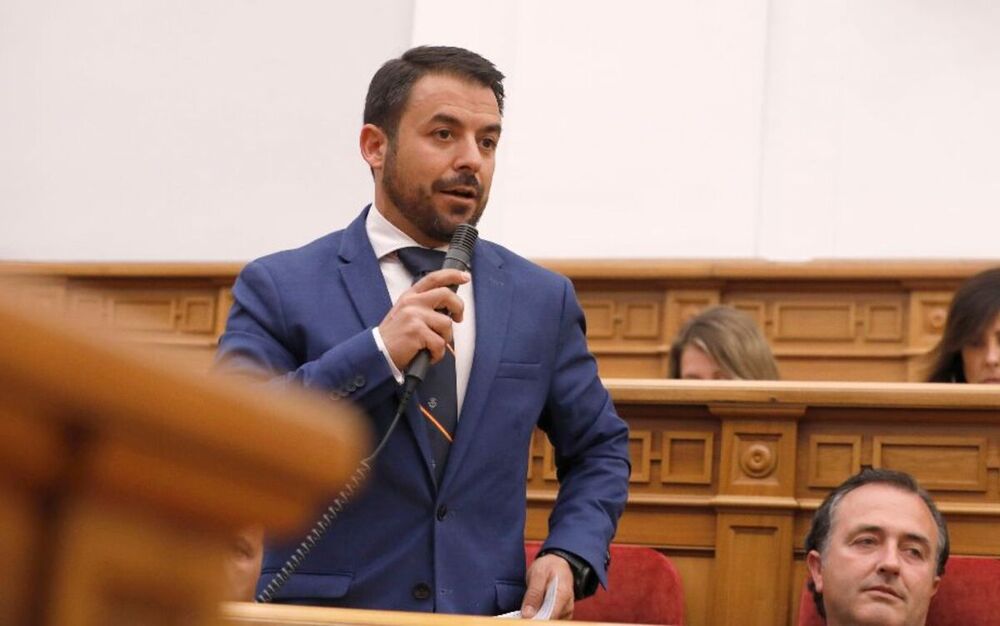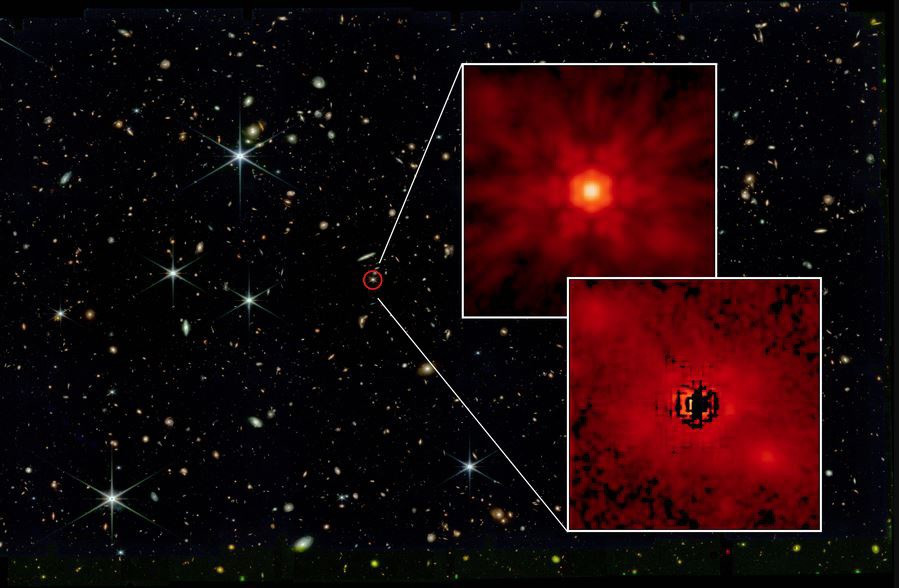The accelerating expansion of the universe is one of the greatest mysteries known. By the time it takes you to read that sentence, about six seconds, the universe will have expanded about 420 kilometers. In a few minutes, by the end of this article, you will have grown 25,000 km, twice the diameter of the Earth. The alleged culprit is dark energy, a mystery…
Subscribe to continue reading
Read without limits
The accelerating expansion of the universe is one of the greatest mysteries known. By the time it takes you to read that sentence, about six seconds, the universe will have expanded about 420 kilometers. In a few minutes, by the end of this article, you will have grown 25,000 km, twice the diameter of the Earth. The alleged culprit is dark energy, a mysterious driving force that has been expanding the boundaries of the universe for 10 billion years and will continue for a long time, faster and faster, until the universe becomes a vast empty, cold, dead space.
This week, the European Space Agency (ESA) launched Euclid, the largest space mission in history designed to understand dark energy, which makes up 70% of the universe. His second goal is to study the equally unknown dark matter, which explains another 25% of the universe. Dark matter is invisible, but it exerts a gravitational force that keeps galaxies and galaxy clusters together – 5% of the universe we already understand – and makes billions of solar systems possible, including our own.
The war in Ukraine was about to thwart this remarkable quest for knowledge. The 600-million-euro Euclid telescope was due to take off this year on a Russian Soyuz rocket. It is something impossible due to the economic blockade of Russia. The only other ticket available was aboard an Ariane rocket that will launch perhaps in 2025. Mission scientists and engineers have been racing against time to reconfigure the mission to accommodate the vibrations and vibrations of another spacecraft already ready for liftoff. This year: a reusable Falcon 9 rocket built by Elon Musk’s SpaceX company. Takeoff is scheduled for Saturday at 5:11 pm, Peninsula time, from Cape Canaveral (United States).
Euclid’s destination is the second Lagrange point, one and a half million kilometers from Earth. There is a balance of the gravitational forces of the Sun and the Earth, so that the telescope remains stable and can scan the sky more clearly than ground-based telescopes.
This telescope’s task is daunting: to determine the shape and distance of 2,000 million galaxies spread across a third of the entire sky. With this material, a large map of the universe will be formed in three dimensions, to which a fourth will be added: time. In astronomy, the farther away an object is, the older it is, and Euclid would be able to see into the universe from today to 10 billion years ago.
“If you imagine a slice of bread, each slice would be an image where the galaxies that appear are at the same distance,” explains Guadalupe Canas, the mission’s cosmologist. “We will see many galaxies not as they are now, but as they were in the past. By comparing all the slices we can get an idea of \u200b\u200bthe cosmological evolution of the Universe, ”he explains.
The Big Bang theory says that the universe was born 13.8 billion years ago with the explosion of a point of infinite density and a temperature much smaller than a grain of sand. During the first pubs it was completely dark and relatively small. The first light came with the first stars about 200 million years ago, which later began to gather into galaxies and clusters. It is believed that dark energy began to exert its current repulsive power when the universe was 3 billion years old, and its power has been accelerating ever since. This means that the current universe is becoming increasingly empty and galaxies and clusters are more and more distant islands.
“One of the questions we aim to answer is whether the rate of expansion has changed over the history of the universe,” explains Xavier Dupac, a scientist of Euclid processes. Einstein believed that the universe remained still, but this is not the case. If we verify that the rate of expansion remains at the current rate, we will be able to predict the future of the universe. If not stopped, galaxies will collapse and planets will drift away from their stars. The universe will continue to exist, but there will be no life or planets anymore,” the scientist elaborates. The good news is that the universe is “still in its infancy,” and adds that this end will not come until 100 times its current age.
The Euclid telescope has a lens with a diameter of 1.2 meters and two cameras, one for visible light and one for infrared, which will also help you understand how dark matter works. Our solar system is one of 100,000 million within our own galaxy, the Milky Way, which in turn is part of the Local Group of galaxies, which is part of the Virgo supercluster, which in turn is included in the Laniakea supercluster. Dark matter is thought to be essential to maintaining all of these cosmic scaffolding.
The European telescope will be able to detect the presence of dark matter because its gravitational force will distort the light from the galaxies and will allow us to calculate how much it is and where it is located, explains Cristóbal Padilla, a cosmologist at the High Institute. energy physicist in Barcelona, \u200b\u200bwho worked for 10 years on the development of Euclid. “Since we will see many galaxies from very different times, we will be able to better understand the evolution and distribution of dark matter, both within and between galaxies, since we believe it is responsible for the aggregation of various clusters and superclusters of galaxies,” he explains in detail.
After taking off on Saturday, Euclid will take a month to reach the second Lagrange point. After two months of calibration, it will begin its science operations. The telescope will operate for at least six years and will take about 150,000 high-resolution images. In 2027, he will be joined by Roman, a NASA space telescope that will also investigate the “dark universe”.
“In science, the most important question is always what’s next,” Padilla explains. “This mission won’t answer all of them, but it could take us a long way in understanding all of this part of gravity that we don’t know about.”
Dark Universe Engineering
The name of the expedition honors the Greek mathematician Euclid of Alexandria, who lived in the fourth century BC and invented geometry. The density of matter and energy in the universe is related to this mathematical discipline. The Euclid mission involves a consortium of 2,000 scientists from 14 countries, including Spain, which plays an important role in the entire mission. Scientific data will be received and stored at the ESA Center in Villanueva de la Cañada, on the outskirts of Madrid. Universities, research centers and 10 Spanish companies participated in its construction. More than 100 scientists at about 20 institutions in the country are working on the scientific exploitation of the mission. Of the approximately 80 European companies that built Euclid, eight are Spanish.
You can follow MATERIA on FacebookAnd Twitter And instagramor register here to receive Weekly newsletter.

“Beer enthusiast. Subtly charming alcohol junkie. Wannabe internet buff. Typical pop culture lover.”

:quality(85)/cloudfront-us-east-1.images.arcpublishing.com/infobae/7LFLBSHU4FG4FJIYGXW2IUHTDM.jpg)
:quality(85)/cloudfront-us-east-1.images.arcpublishing.com/infobae/7H35DR4K5BDFDMQV5GYX4MUDEA.jpg)

:quality(85)/cloudfront-us-east-1.images.arcpublishing.com/infobae/DYNT4CH2PNFCDKYIR4QDOERVD4.jpg)


More Stories
They noticed the elusive starlight surrounding ancient quasars
The first launch of the Starliner ship arrives with astronauts on board
A wonderful trip to the prestigious Xerox PARC laboratory